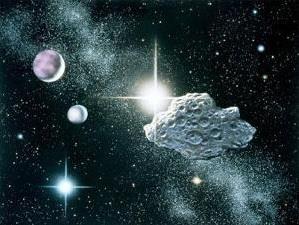May 18, 2013
CAPE CANAVERAL, Fla.: An automated telescope monitoring the moon has captured images of an 88-pound (40 kg) rock slamming into the lunar surface, creating a bright flash of light, NASA scientists said on Friday.

May 18, 2013
CAPE CANAVERAL, Fla.: An automated telescope monitoring the moon has captured images of an 88-pound (40 kg) rock slamming into the lunar surface, creating a bright flash of light, NASA scientists said on Friday.

The explosion on March 17 was the biggest seen since NASA began watching the moon for meteoroid impacts about eight years ago. So far, more than 300 strikes have been recorded.
"It exploded in a flash nearly 10 times as bright as anything we've ever seen before," Bill Cooke, with NASA's Meteoroid Environment Office at the Marshall Space Flight Center in Huntsville, Alabama, said in a statement.
A NASA satellite orbiting the moon is now on a hunt for the newly formed crater, which scientists estimate could be as wide as 66 feet (20 meters).
The flash was so bright that anyone looking at the moon at the moment of impact could have seen it without a telescope, NASA said.
After reviewing digital recordings made by one of the program's telescopes, scientists determined the space rock was about 1 foot (0.3 meters) in diameter, and traveling about 56,000 mph (90,123 kph) when it slammed into the moon and exploded with the force of five tons of TNT.
That same night, cameras detected an unusually high number of meteors blasting through Earth's atmosphere as well. Most meteors burn up well before reaching the ground.
But not always. In February, an asteroid estimated to be about 66 feet (20 meters) in diameter exploded over Chelyabinsk, Russia, damaging buildings and shattering glass, leaving more than 1,500 injured. It was the largest object to strike Earth since 1908.
"The Russian fireball was many orders of magnitude larger and possessed 100,000 times more energy," than the lunar impact, Cooke wrote in an email to Reuters.
He believes the lunar impact and the March 17 meteor shower on Earth are related, the result of both bodies traveling together through a region of space sprinkled with small rocks and dust.
"We'll be keeping an eye out for signs of a repeat performance next year when the Earth-moon system passes through the same region of space," Cooke said.
Courtesy: Reuters
















































































































